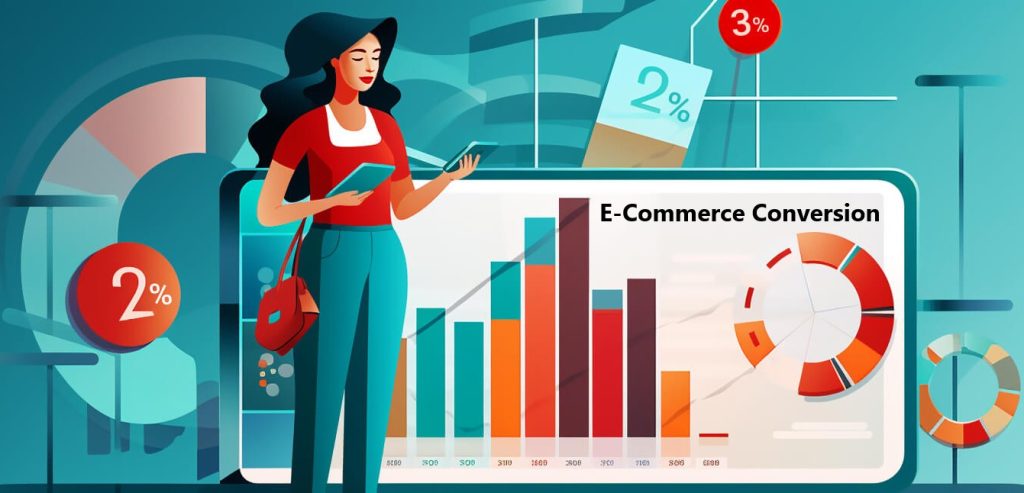
Optimizing Product Pages for Maximum Impact
One of the most vital e-commerce conversion tips is to optimize your product pages. These pages serve as the digital equivalent of a storefront. They provide visitors with the information they need to make a purchase decision. For online stores, where customers cannot physically interact with products, the quality of product descriptions and images can make or break a sale.
Your product descriptions should be detailed, addressing both the features and benefits of the item. Rather than simply listing specifications, tell a story about how the product can improve the customer’s life or solve a problem they are experiencing. This not only helps with SEO but also provides the customer with the reassurance they need to buy.
High-quality images are equally important. Customers want to visualize the product, so providing multiple images from different angles can help close the sale. Research from BigCommerce reveals that 78% of shoppers consider product photos to be the most critical factor in their decision-making process. Additionally, including video demonstrations or interactive 360-degree images can significantly boost conversions. These additions give customers a richer, more engaging product experience.
Simplifying the Checkout Process
A complicated or frustrating checkout process is one of the biggest barriers to conversion. Cart abandonment rates are alarmingly high across e-commerce platforms, with around 70% of shopping carts left abandoned. Therefore, simplifying the checkout experience is crucial to reducing drop-off rates and increasing sales.
To streamline this process, consider allowing guest checkouts. Forcing customers to create an account before completing a purchase often leads to abandonment. By allowing them to check out as guests, you remove a significant hurdle and make the purchasing process quicker and more convenient. Amazon’s one-click purchase option is a great example of how removing friction can enhance conversions.
Additionally, offer multiple payment options. Consumers expect a range of payment methods, from credit cards to digital wallets like PayPal, Apple Pay, and Google Pay. According to a report from Baymard Institute, 8% of online shoppers abandon their carts due to a lack of convenient payment methods. By providing a variety of payment options, you make it easier for customers to complete their purchase.
Leveraging Social Proof for Trust
Social proof is one of the most powerful tools for driving e-commerce conversions. When customers can’t physically touch or see a product, they rely on reviews, ratings, and testimonials from other buyers to guide their decisions. In fact, 92% of consumers read online reviews before making a purchase.
To make the most of social proof, encourage your customers to leave reviews after their purchases. This not only helps future buyers make informed decisions but also boosts your store’s credibility. Display these reviews prominently on your product pages, ensuring that potential customers can easily find them. Some brands even incentivize customers to leave reviews by offering discounts or rewards for their feedback.
Incorporating user-generated content, such as photos or videos from satisfied customers, can also enhance trust. Seeing real customers interact with your products can provide the reassurance others need to buy. Studies show that customers are much more likely to purchase a product when they see positive feedback from other users.
Creating a Seamless Mobile Experience
With mobile devices accounting for over 73% of e-commerce traffic, ensuring a seamless mobile experience is crucial. However, mobile conversion rates still lag behind desktop, largely due to poor mobile user experiences. Optimizing your site for mobile is one of the most effective e-commerce conversion tips to address this gap.
When designing your e-commerce site, adopt a mobile-first approach. This means creating a user experience that is specifically tailored to the needs of mobile users, rather than simply adapting your desktop site for smaller screens. This could include simplifying navigation, making buttons larger and more accessible, and ensuring that images and text are appropriately sized for mobile viewing.
Load speed is another critical factor in mobile conversions. According to research by Google, bounce rates increase by 32% when a site’s load time increases from 1 to 3 seconds. Ensuring that your site loads quickly, especially on mobile devices, can significantly reduce abandonment rates and keep customers engaged. Compressing images, reducing server response time, and minimizing JavaScript can all help to speed up your site’s performance.
Enhancing Calls-to-Action (CTAs)
One of the simplest yet most impactful e-commerce conversion tips is optimizing your calls-to-action (CTAs). A clear, compelling CTA encourages visitors to take the next step, whether that’s adding an item to their cart, signing up for a newsletter, or completing a purchase.
Your CTAs should be visually prominent, with contrasting colors that draw attention. The wording should also be clear and actionable, such as “Buy Now,” “Add to Cart,” or “Shop the Sale.” Avoid cluttering your pages with multiple CTAs, as this can overwhelm customers and dilute their effectiveness. A/B testing different CTAs can help you determine what resonates best with your audience and leads to the highest conversion rates.
Speed and Performance: The Silent Conversion Killers
Website performance plays a pivotal role in e-commerce conversions. Slow-loading sites frustrate visitors, causing them to abandon your page before they’ve had a chance to explore your products. According to a study by BigCommerce, a one-second delay in page load time can result in a 7% reduction in conversions.
To improve your site’s speed, start by optimizing images, minifying CSS and JavaScript, and using content delivery networks (CDNs). Regularly monitor your site’s performance using tools like Google PageSpeed Insights to identify areas that need improvement. A fast, responsive website not only improves the user experience but also boosts your search engine rankings, making it easier for customers to find you in the first place.
Implementing Retargeting Strategies
Even with the best strategies in place, not all visitors will convert on their first visit to your site. This is where retargeting comes into play. Retargeting allows you to reconnect with potential customers who have visited your site but left without making a purchase. By showing them ads for the products they viewed, you can remind them of their interest and encourage them to return to complete their purchase.
Retargeting is highly effective in increasing conversions because it targets warm leads—people who have already shown interest in your products. A well-crafted retargeting campaign, offering incentives such as discounts or free shipping, can be the nudge that brings customers back to your site.
Optimizing for Cart Abandonment Recovery
Cart abandonment is one of the biggest challenges for e-commerce stores, but it also presents an opportunity. Sending cart abandonment emails is one of the most effective e-commerce conversion tips to recover lost sales. According to SaleCycle, 45% of cart abandonment emails are opened, and 21% of clicks on these emails lead to completed purchases.
To maximize the effectiveness of your abandonment emails, send them promptly—within an hour of the customer leaving your site. Include a clear CTA that encourages them to complete their purchase, and consider offering an incentive, such as a discount or free shipping, to sweeten the deal.
Boosting e-commerce conversions is about making continuous, incremental improvements across every stage of the customer journey. From optimizing product pages and simplifying checkout to leveraging social proof and retargeting, these e-commerce conversion tips can significantly improve your store’s performance. By focusing on the user experience, mobile optimization, and strategic retargeting, you can turn more visitors into loyal customers and drive long-term growth for your business.

